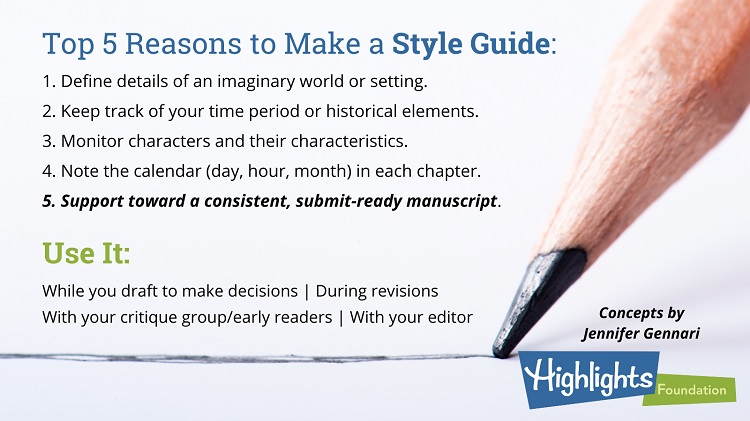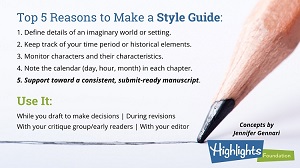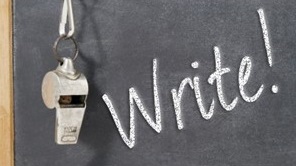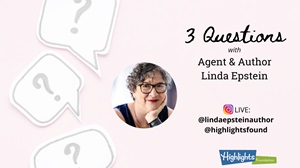
At my first newspaper job, I was handed the AP Stylebook and told to study it. It was amazing to realize that journalists follow set rules of usage that are agreed upon and revised annually by the Associated Press. The AP defined the standards and compiled them in one handy resource.
Later, I learned that corporations have internal style guides, outlining the company’s brand. Illustrators rely on a visual style guide to set the parameters for color, shape, and more. And when your book is accepted for publication, a copyeditor will create its style guide to establish consistency throughout.
Sometimes, when we are deep into writing, we are bogged down in the details and twists and turns. It’s hard to keep all that information in our heads (or in random files and sheets!). A great time to get organized is when we’re ready to revise.
Creating an editorial style guide can help. For example, you might realize you have too many characters or not enough distinguishing attributes for your secondary characters. Or maybe you’ve written six days of school in a row and need to add in a weekend scene. Or, maybe, when you draw a map of your story world, you discover another setting where additional scenes can take place.
Your editorial style guide will define what you want to define — from logline to timeline — and support you as you make your manuscript submission-ready.
Jennifer’s Top 5 Reasons to Make a Style Guide
- Define details of an imaginary world or setting.
- Keep track of yoru time period or historical elements.
- Monitor characters and their characteristics.
- Note the calendar (day, hour, month) in each chapter.
- Support toward a consistent, submit-ready manuscript.
Use it:
- While you draft to make decisions
- During revisions
- With your critique groups/early readers
- With your editor







